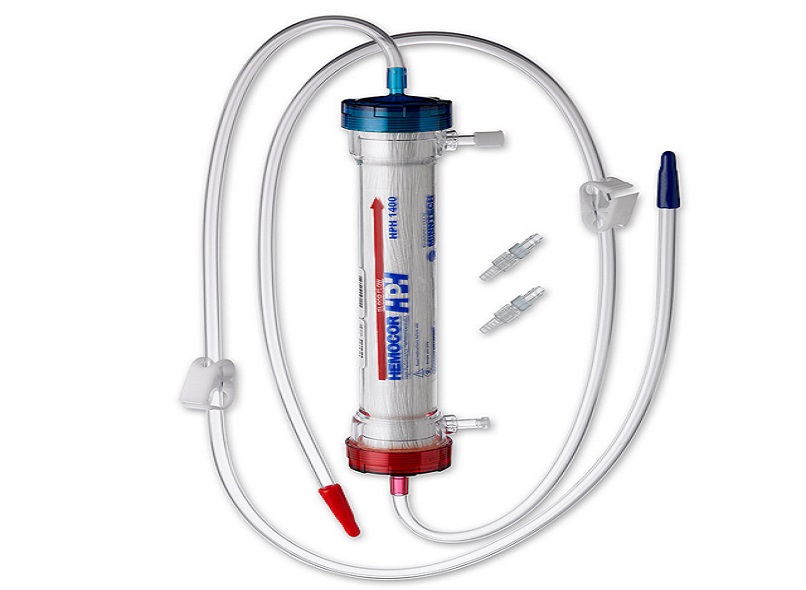Ultrasonic Welding for Cardiovascular Filters: Enhancing Precision and Efficiency

The medical device industry continues to evolve rapidly, with a growing demand for smaller, lighter, and more complex products. This miniaturization trend is particularly evident in wearable devices used for drug delivery and patient monitoring. As these devices become smaller and more intricate, the challenge of assembling their plastic components, including cardiovascular filters, becomes more significant.
Traditional methods of joining plastics, such as ultrasonic welding, laser welding, and staking, have limitations when it comes to fragile and delicate components. Ultrasonic welding, in particular, is a popular choice for its speed, controllability, and cost-effectiveness. However, the vibration introduced during ultrasonic welding can damage thin or fragile membranes used in cardiovascular filters, rendering them useless.
To overcome this challenge, manufacturers are exploring alternative methods that provide precise and controlled welding without compromising the integrity of delicate components. One such method is the use of thermal processes, which eliminate the risk of damaging thin membranes. However, traditional steady-state thermal sealing has its limitations in terms of cycle-to-cycle repeatability and process control.
This article explores an innovative approach called PulseStaking, developed by Emerson, which addresses the challenges associated with ultrasonic welding of cardiovascular filters. By providing greater precision and responsiveness, PulseStaking offers an effective solution for welding small, delicate, and thin-walled components.
Understanding Ultrasonic Welding
Ultrasonic welding is an industrial process that uses high-frequency ultrasonic acoustic vibrations to create a solid-state weld between two workpieces. It is commonly used for joining plastics and metals, including dissimilar materials. Unlike traditional welding methods, ultrasonic welding does not require bolts, nails, soldering materials, or adhesives to bind the materials together. This process is particularly suitable for medical devices as it keeps the temperature well below the melting point of the materials, preventing unwanted properties that may arise from high-temperature exposure.
The history of ultrasonic welding can be traced back to the 1960s when it was primarily used for rigid plastics. The patent for ultrasonic welding of rigid thermoplastic parts was awarded to Robert Soloff and Seymour Linsley in 1965. Soloff, the founder of Sonics & Materials Inc., discovered the potential of ultrasonic energy to weld plastic parts while working at Branson Instruments. He realized that the energy could travel through and around rigid plastics, eliminating the need for manual movement of the welding probe. Ultrasonic welding found its first application in the toy industry and has since been adopted in various industries, including automotive, aerospace, and medical.
The Challenges of Ultrasonic Welding for Cardiovascular Filters
Cardiovascular filters, used in medical devices for filtering blood and preventing clotting, pose unique challenges for ultrasonic welding. These filters are often small, delicate, and have thin membranes made of polymers such as polypropylene or polyethylene terephthalate. Ultrasonic welding, if not carefully executed, can damage these thin membranes, rendering the filters ineffective. Even the slightest pinhole can compromise the functionality of the filter, making it crucial to find alternative welding methods that ensure the integrity of the delicate components.
While thermal processes offer a solution by eliminating the risk of damaging thin membranes, traditional steady-state thermal sealing has its limitations. It lacks cycle-to-cycle repeatability and precise process control, which are crucial for achieving high-quality welds in intricate components. As the demand for smaller and more complex medical devices increases, manufacturers need a welding method that can accommodate the welding of delicate components while maintaining control over the welding process.
Introducing PulseStaking: Enhanced Precision and Control
Emerson's PulseStaking technology addresses the limitations of traditional ultrasonic welding and steady-state thermal sealing. PulseStaking offers a new option for welding small, delicate structures found in filtration parts, including cardiovascular filters. This innovative approach provides greater precision, responsiveness, and control throughout the welding process.
Unlike traditional ultrasonic welding, PulseStaking uses an electromechanical actuation system to deliver downforce with increased precision. The actuator applies heat and pressure selectively, ensuring that the welding process is highly controlled and localized. It eliminates the risk of damaging thin membranes, allowing for the creation of high-quality seals.
The PulseStaking cycle involves multiple heating, cooling, and pause intervals to prevent overheating and manage tip and seal temperature until each seal is completed. This cycle consistency does not rely on the initial temperature of the tool, ensuring repeatability and process control. The system is equipped for both heating and cooling, allowing for precise temperature management throughout the welding process.
Advantages of PulseStaking for Cardiovascular Filter Welding
PulseStaking offers several advantages for welding cardiovascular filters and similar delicate components. These advantages include:
1. Enhanced Precision and Responsiveness
The electromechanical actuation system used in PulseStaking provides greater precision and control over the welding process. The system allows for rapid and precise adjustments of downforce during the welding process, leading to significantly improved weld quality. The precise force control increases the likelihood of achieving 100% good parts and reduces the risk of producing scrap.
2. Compatibility with Delicate Components
PulseStaking is specifically designed to accommodate the welding of small, delicate, and thin-walled components. The technology can work with multiple, closely spaced features on geometrically complex parts, including those with tricky angles and planes. It can create bonds on a wider range of plastics than traditional heat staking, making it suitable for welding cardiovascular filters made of various materials.
3. Cycle Consistency and Temperature Control
In high-speed, multistep manufacturing processes, cycle consistency and temperature control are critical for efficiency and repeatability. PulseStaking offers excellent cycle consistency and temperature control, reducing the risk of producing defective products and increasing overall productivity. The system ensures that the welding parameters are executed accurately and gently, resulting in consistent weld characteristics and minimal flash or part marking.
4. Customizability and Automation
PulseStaking can be easily customized to fit the exact specifications of the parts being welded. Heating tips are available in many standard and custom shapes, and they can be operated singly or densely grouped into larger tools for multiple operations. The localized heating characteristics of each tip enable sealing operations on complex or angled surfaces, in close proximity to heat-sensitive components, without the risk of unintended radiant heating.
Moreover, PulseStaking is highly compatible with automation, making it suitable for high-volume manufacturing. The technology can be seamlessly integrated into automated manufacturing lines, reducing labor-intensive processes and improving overall efficiency.
Conclusion
Ultrasonic welding plays a crucial role in joining plastic components, including cardiovascular filters, for medical devices. However, the delicate nature of these filters poses challenges for traditional ultrasonic welding methods. PulseStaking, a new approach developed by Emerson, offers enhanced precision, responsiveness, and control for welding small, delicate structures found in filtration parts.
By using an electromechanical actuation system and a carefully designed pulse cycle, PulseStaking provides a solution that allows for the welding of delicate components without compromising their integrity. The technology ensures cycle consistency, temperature control, and precise force control, leading to high-quality welds and improved yields.
As medical devices continue to evolve, becoming smaller and more complex, joining technologies that can accommodate the welding of delicate components become increasingly important. PulseStaking offers a promising solution for the welding of cardiovascular filters and other intricate components, contributing to the advancement of the medical device industry.
See more Dizo





